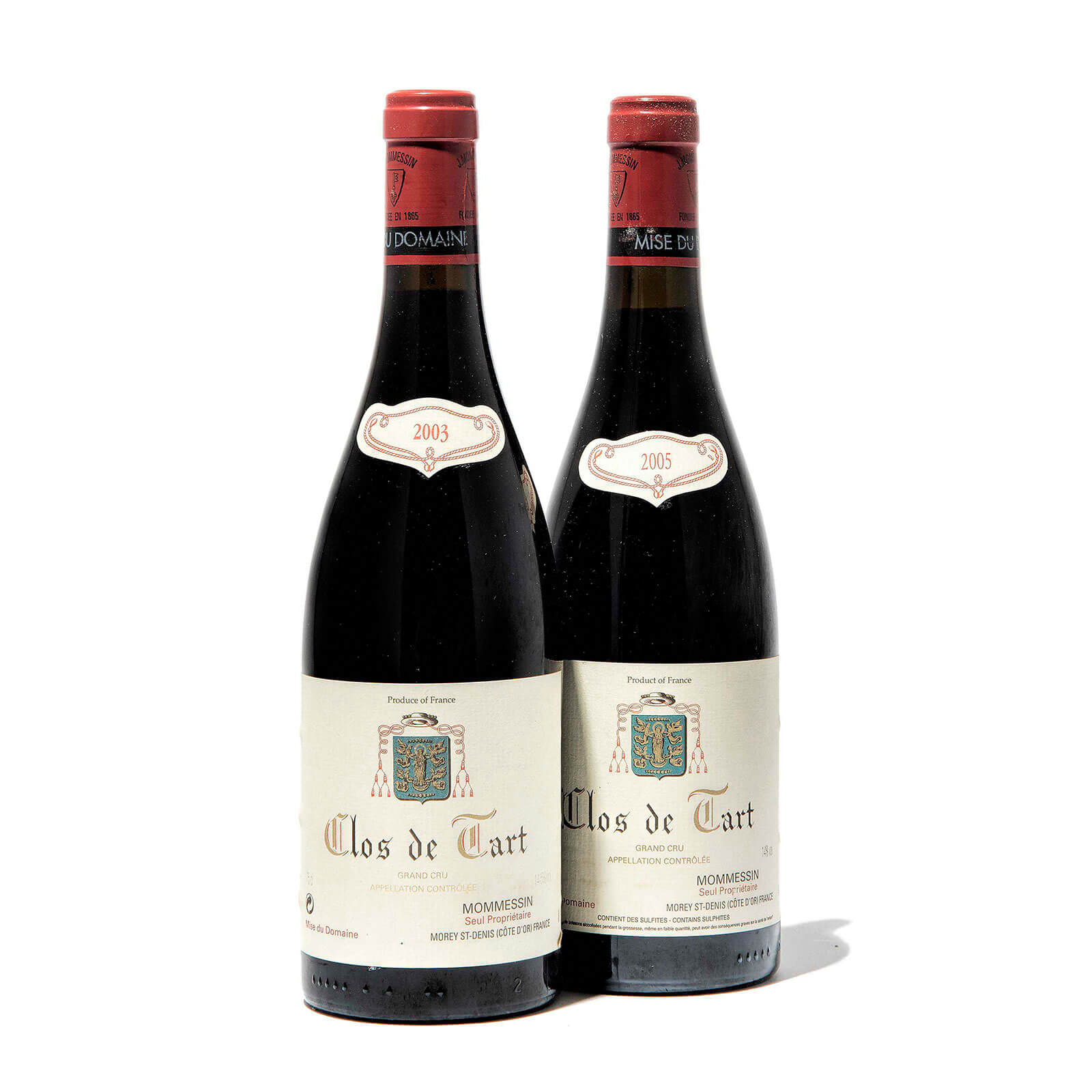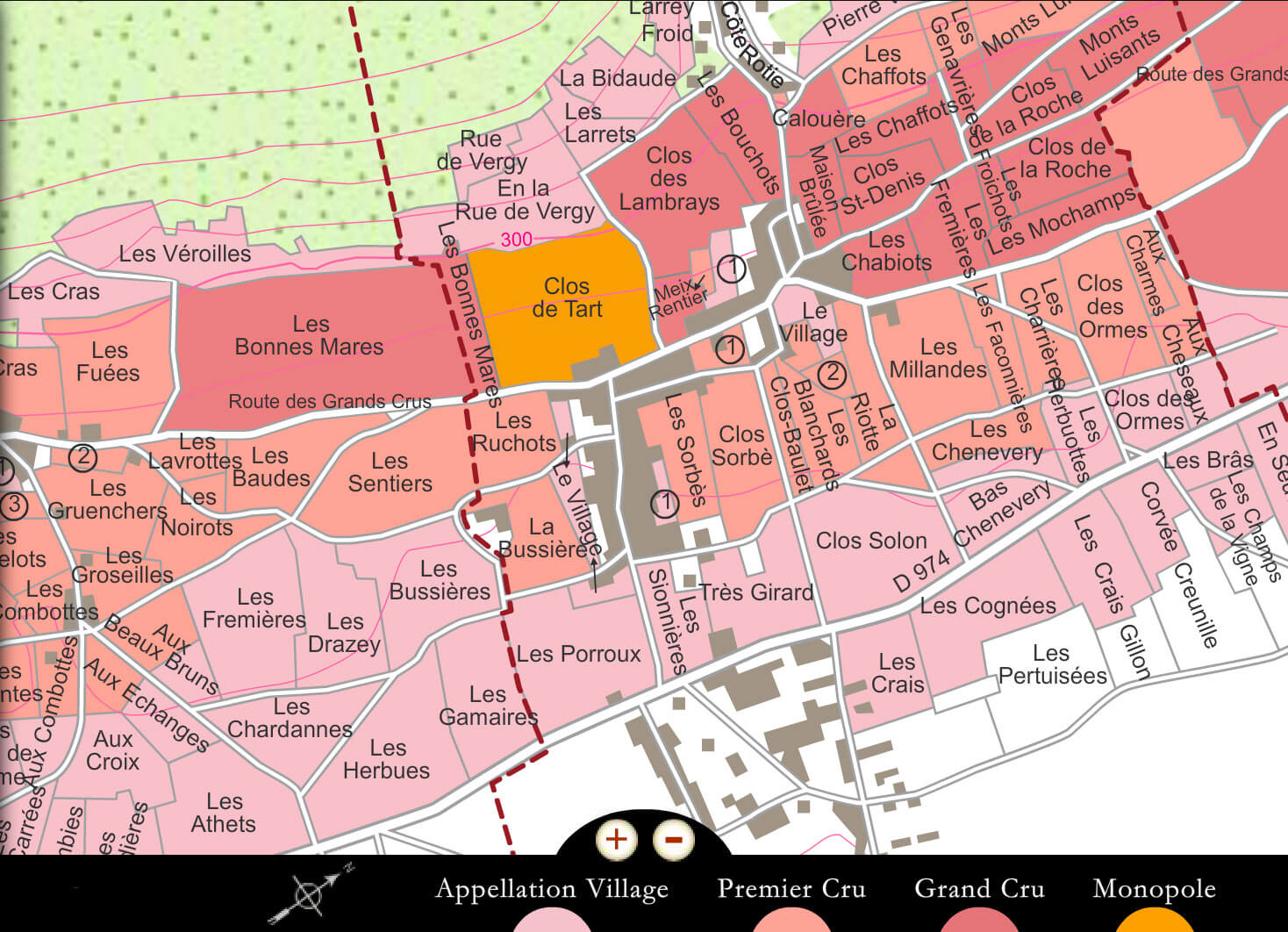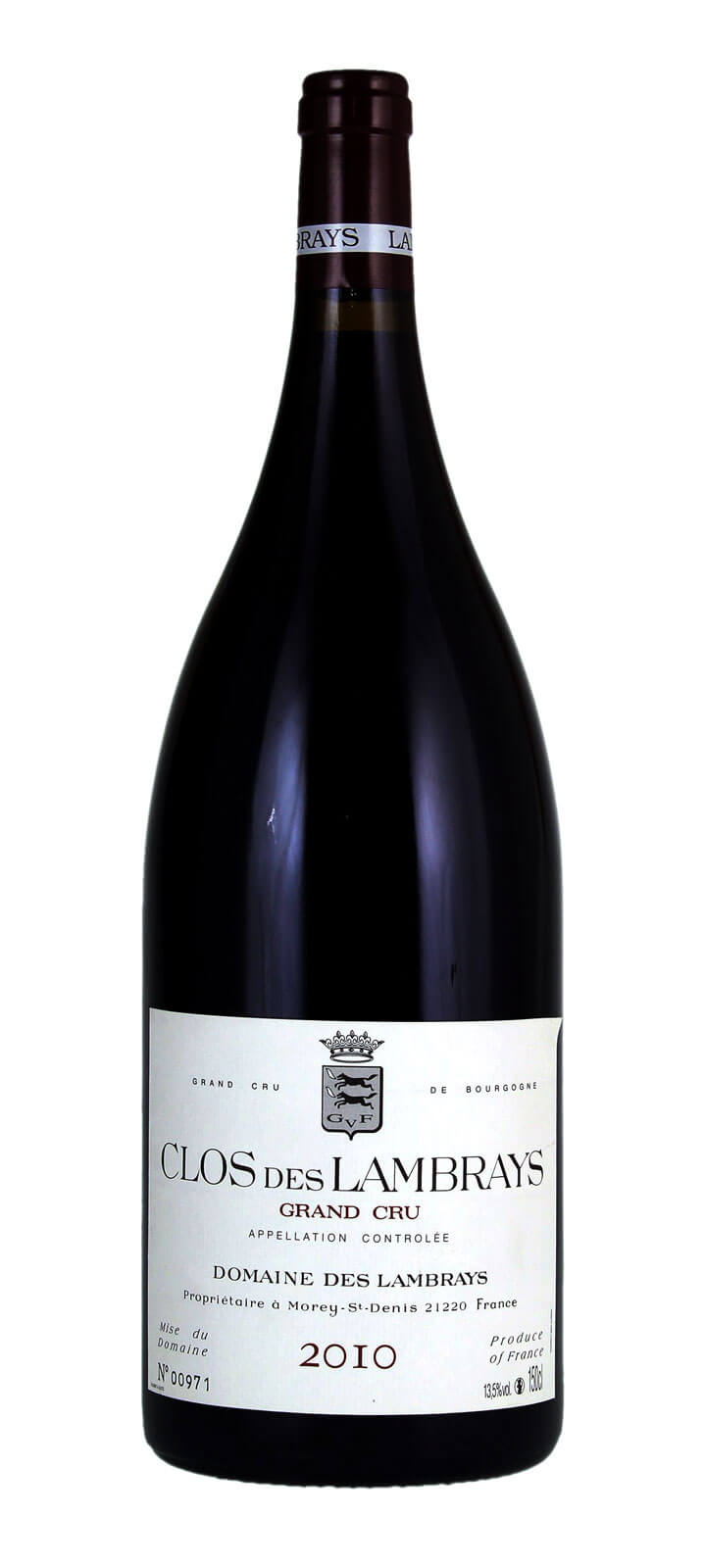Clos De Tart And Clos Des Lambrays: The Glory Of A Great Burgundy Is The Pinnacle Of Wine
by Ken Gargett
If you were not watching closely, you might have missed it: a tragedy has befallen the world of wine. In the last few years, the top wines of Burgundy have become so hideously expensive that they are now hardly more than the preserve of Russian oligarchs and bling-embalmed rappers.
Burgundy was once a wine for those in the know (or thought they were or wanted to be).
Unless you are very young, when you entered the mystical and wonderful world of wine chances are that Bordeaux was laid before you as the be-all-and-end-all of wine.
Sure, start with a champers and finish with a vintage port, a white Burgundy with the entrée, and feel free to try a New World wine or perhaps one of the Italian or Spanish classics if you were feeling particularly in need of the exotic.
But if you were serious, then Bordeaux it was. This glorious region of France ruled the wine world. A lesser growth if yours was to be a quick lunch, but for anything more a fine classed growth, perhaps even a First, was de rigeur.

Clos de Tart 2003 and 2005 (photo courtesy Christie’s)
One might try a Burgundy for fun, but so often this would surely mean disappointment. Domaine de la Romanée-Conti was an exception, but there really were not that many of those available. And even back then, they were expensive wines.
Possibly a Comte de Vogue or one of the better négociants like Jadot or Faiveley if they had a Grand Cru going. But this was all a bit too much like flirting with the frivolous before home to the family.
Underground, we might have been forced, but Burgundy did have a core of immovable, unshakable support. Friends would query my sanity (many still do) and that of others. Why risk all on Burgundy when a good claret was so much more reliable?
- Burgundy doesn’t age.
- Burgundy is overpriced (even though most of it was usually far cheaper than the top Firsts and Seconds).
- Too inconsistent.
- Burgundy is insipid.
- Don’t you know that most of it is actually imported from the Rhône, or worse Algeria?
- No one really understands Burgundy.
We heard it all.
And there was something to it. If you wanted consistency, Bordeaux was the go. With Burgundy, you might open a bundle of bottles that did not excite before you hit the jackpot. But for us, when you hit that jackpot no other wine could ever come close. The risk was worth it. The glories of a great Burgundy were then, and still are, the pinnacle of wine.
A recent event provided a chance to reacquaint myself with a couple of old favorites. These were considered good, not great, wines at the time, and they could be snapped up for proverbial peanuts.
Those days are long gone and we have seen prices across the Burgundy board launch themselves into the stratosphere.
On one hand, Burgaphiles (no idea if there is such a word, but there should be) have never doubted that the wines were deserving of such accolades and adoration. It is just that we hate the fact that we can rarely ever afford them these days.
To those who can, good luck to you and stock up. Demand is only going to grow, and prices will continue on their upward trajectory. After all, these vineyards are well defined and it is not possible to increase production to meet the skyrocketing demand.
As for prices, they will vary considerably depending on location, stockist, and vintage. And that is if you can manage to find the wines in the first place.

Map of the Clos de Tart ‘Monopole’ parcel in Burgundy
Clos de Tart and Clos des Lambrays: two very fine Burgundies
Clos de Tart and Clos des Lambrays are two very fine Burgundies, both from Morey-Saint-Denis, but I doubt that their reputations have ever been higher. Back in the 1970s and 1980s, they were not exciting too many wine lovers.
Not so now.
The Mommessin family purchased Clos de Tart in 1932 at a time when no one else seemed interested. They became only the third owner since records began for this vineyard back in 1145 (or 1141, depending on which authority one prefers – it hardly matters).
Mommessin ran a négociant business but sold this in the 1990s. The family kept Clos de Tart. It is a Grand Cru and a monopole (as in an appellation/vineyard entirely owned by a single entity) of around seven and a half hectares.
Bordering Bonnes Mares, the wines tend to the generous with rich fruit, complexity, and length. Expect them to age. Most commentators believe the wines to have improved since the appointment of Sylvain Pitiot as winemaker in the late 1990s.
On the other side, Clos de Tart borders what is almost another monopole, Clos des Lambrays.
“Almost” as there is a tiny plot within the clos (a walled vineyard) owned elsewhere. Another Grand Cru, it is almost nine hectares.
Records here only date back to the fourteenth century. It has enjoyed considerably more owners than Tart and, relatively recently, joined the LVMH empire (owners of Moët & Chandon, Veuve Clicquot, Krug, and numerous other estates in Champagne and elsewhere). This has coincided with both a rise in prices and a rise in quality.
Clos de Tart and Clos des Lambrays: proof is in the tasting
That, of course, is where it gets interesting. Lovers of Burgundy will argue such things until the cows are home.
I’d say that the proof is in the tasting, but not necessarily so.
A recent tasting focusing on the Grand Cru wines of Morey-Saint-Denis saw, amongst other very fine wines, two from Clos de Tart – 2000 and 2005 – and four from Clos des Lambrays, 1998 (magnum), 1999, 2008 and 2010.
A dozen or so Burgaphiles then argued back and forth, with all of these wines having their disciples. It is all part of the fun, although it does make it difficult if you are hoping to purchase them and are looking for guidance.
I guess the answer to that is that they were all good, different but good, and you won’t go wrong with any of them.
I am a massive fan of the top wines from 2010. For me, they are what good Burgundy is all about: ethereal, elegant, balanced, subtle, and full of flavor and finesse.
Clos de Tart and Clos des Lambrays: brief tasting notes
Clos de Tart 2000: still fresh and fleshy. Good density. Spices, plums, and red apple notes. Good weight, reasonable length and soft tannins. Finely balanced. This is drinking superbly now but still has time ahead of it. Offers power, more than finesse. 93.
Clos de Tart 2005: dark and rich with some serious concentration here. Finely balanced with plums, animal hide notes, and black fruits. Both complex and plush, a really superb Clos de Tart. Lots of grip on the finish. A wine with years ahead of it, if you can keep your hands away. 96.
Clos des Lambrays 1998 (magnum): oozing blackberry jam and earthy notes. Has a pleasing toastiness, though hard to imagine that this is still from the oak. Some mild chocolate notes and a lovely mushroomy aroma. Ripe fruit, very good length. Open and full-flavored. Generous to a fault. In magnum, it still has an exciting future though it is a joy to drink now. 95.
Clos des Lambrays 1999: conventional wisdom would insist that this should be the better wine when compared to the ’98, although the format of magnum for the ’98 hardly means a level playing field. A plush, full-flavored style with black fruits, chocolate, and leather. Very fine tannins. Impressive length and the wine does linger. Drink now or down the track. Not much between this and the 1998. 94.
Clos des Lambrays 2008: an unenviable task for this vintage when matched with those around it, but it more than held its own. It was fleshier and more tannic than the others, or at least the tannins were less defined giving that impression. Quite powerful. Has a future. I prefer wines with elegance and finesse to those exhibiting such muscle, but it is all personal preference at these heights. 92.

Clos des Lambrays 2010 (photo courtesy winebid.com)
Clos des Lambrays 2010: I love the 2010 vintage, and this showed why. Powerful certainly, but it had a level of finesse and elegance that the others could not quite match. Meaty notes, nuts, and a roasted earth character before a gorgeous sweet core emerged. Great length. A superb Burgundy, which both needs and deserves time. A cracker. 97.
You may also enjoy:
The World’s Best Wine? No Contest: Romanée-Conti By Domaine De La Romanée-Conti
Leave a Reply
Want to join the discussion?Feel free to contribute!



A nice introduction to the domaines, but given the carnival that surrounded the movements of their respected/respective winemakers this year, I think that that that would also have been an interesting point to raise…
Hi Bill,
Many thanks for your comment.
I am assuming that you are the Bill Nanson of the Burgundy Report and the book ‘Finest Wines of Burgundy’ (sitting on a shelf just near where I am currently typing)?
I do agree with your thoughts on the information about winemakers (not just here but for other pieces I have done for Q&P) but in a way, I think for Q&P, it is perhaps of less interest to the majority of readers (bit like going too deeply into the nuances of winemaking etc) than it would be the more wine-obsessed readers of publications like yours (and also for other more in-depth wine-focused stuff I do elsewhere).
I am one of those people fascinated by anything at all that pertains to wine, especially wines like Burgundies and champagnes, and I do try and balance things when writing for others (aware that for reasons unknown, not everyone shares quite the same obsession), but also all too aware that I am sure I do not get it right anything like all the time.
Anyway, I do appreciate your thoughts.